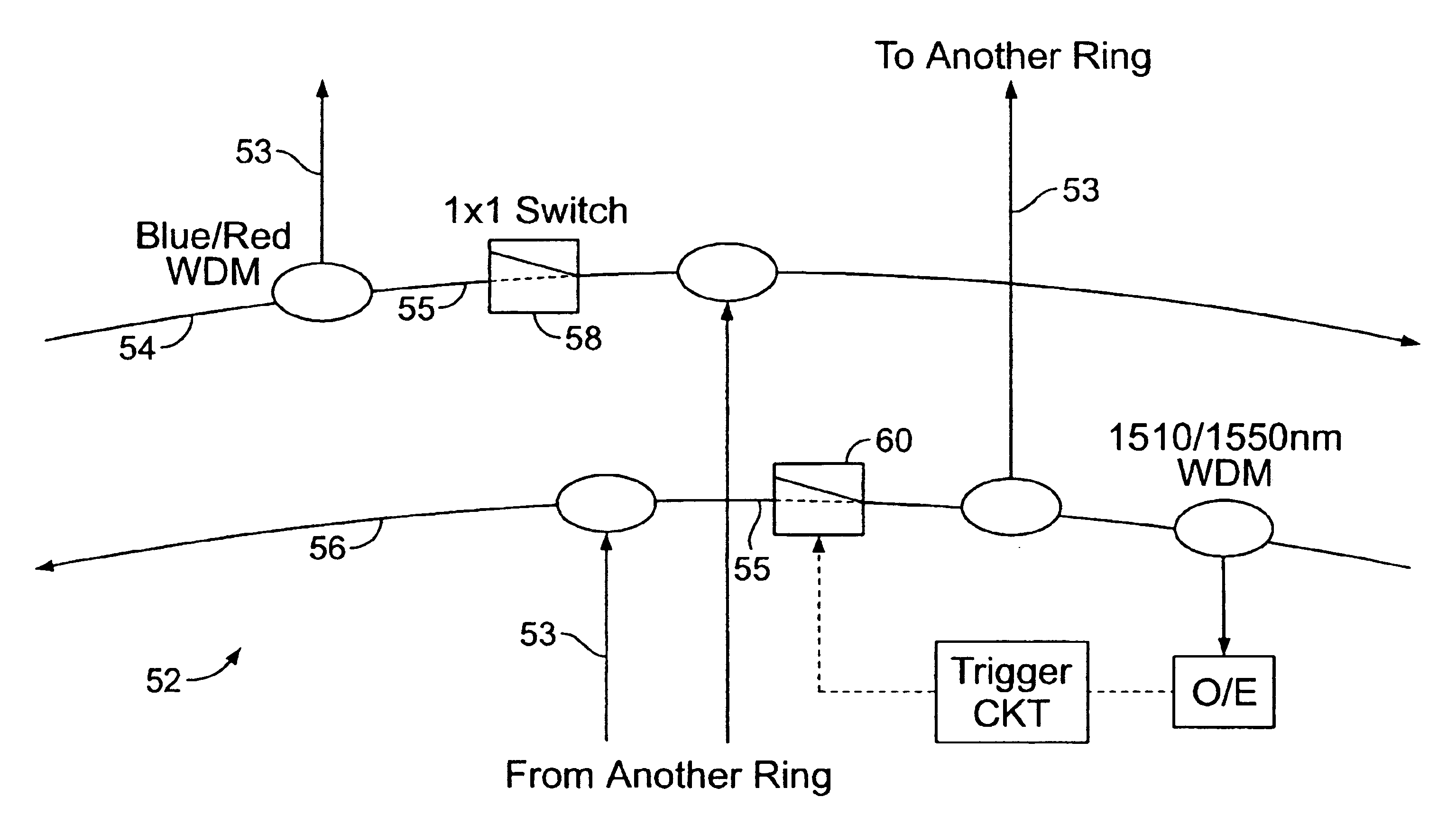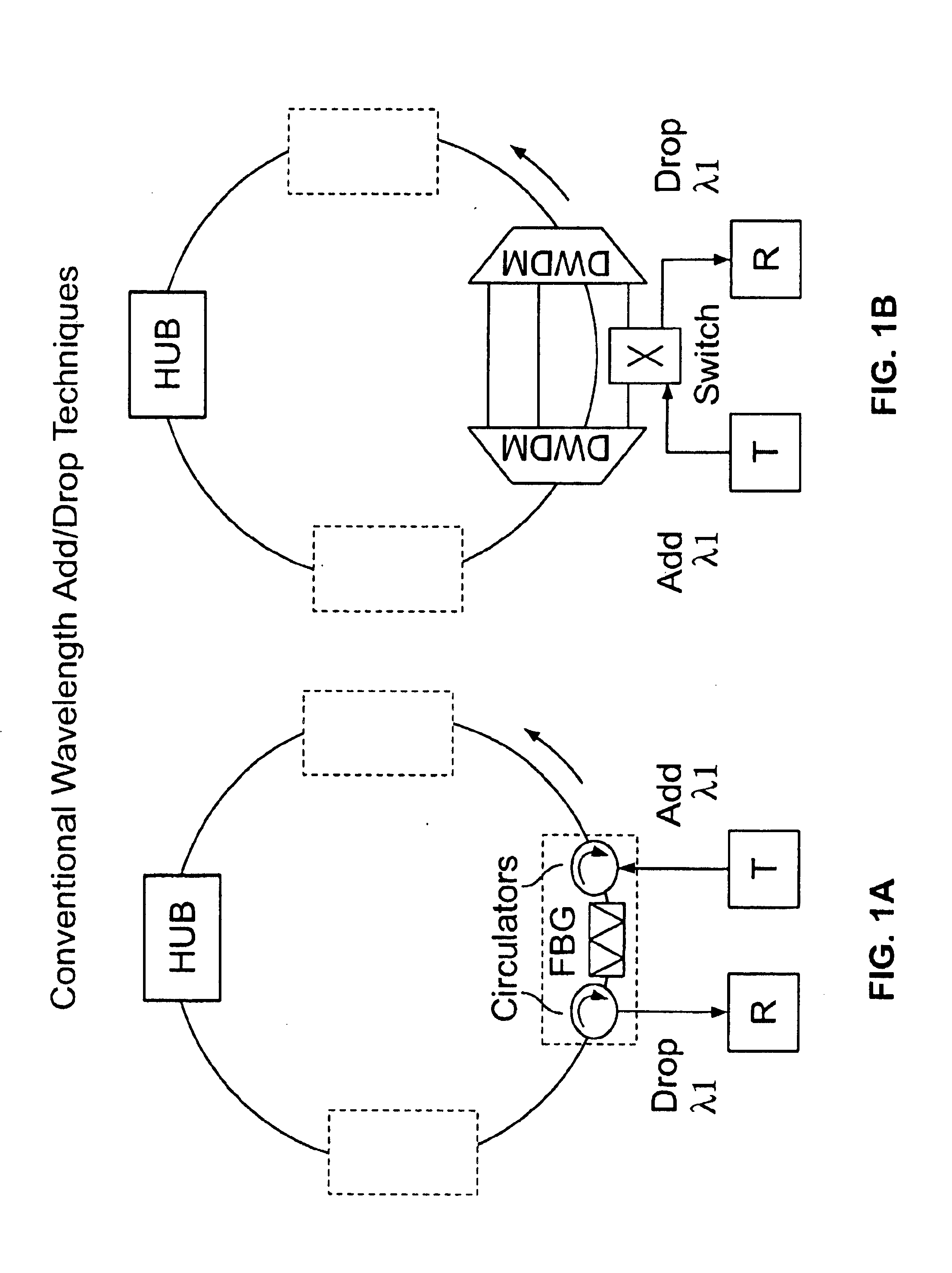Interconnected broadcast and select optical networks with shared wavelengths
a wavelength-sharing, broadcasting technology, applied in the field of all optical networks, can solve the problems of lasing phenomenon, limited transmission distance and data rate, and wavelengths may circulate perpetually around the ring
- Summary
- Abstract
- Description
- Claims
- Application Information
AI Technical Summary
Benefits of technology
Problems solved by technology
Method used
Image
Examples
Embodiment Construction
[0045]In one embodiment of the present invention, methods are provided for transmitting optical signal traffic. An all optical network is utilized with at least two rings that are geographically dispersed. Each ring has at least one transmitter and receiver. A sufficiently large enough number of wavelengths is shared in both rings to achieve the sharing without O-E-O conversions between the rings. Alternatively, the available wavelengths are separated into distinct ring bands. The optical signal traffic is shared throughout the entire optical network. Each ring is provided with its own distinct ring band of the optical signal traffic. All of the optical signal traffic is transmittable throughout the optical network. Each receiver is configured to receive only wavelengths in a ring band designated for its associated ring.
[0046]The present invention also provides all optical networks for optical signal traffic. In one embodiment the all optical network has at least first and second ri...
PUM
 Login to View More
Login to View More Abstract
Description
Claims
Application Information
 Login to View More
Login to View More - R&D
- Intellectual Property
- Life Sciences
- Materials
- Tech Scout
- Unparalleled Data Quality
- Higher Quality Content
- 60% Fewer Hallucinations
Browse by: Latest US Patents, China's latest patents, Technical Efficacy Thesaurus, Application Domain, Technology Topic, Popular Technical Reports.
© 2025 PatSnap. All rights reserved.Legal|Privacy policy|Modern Slavery Act Transparency Statement|Sitemap|About US| Contact US: help@patsnap.com



